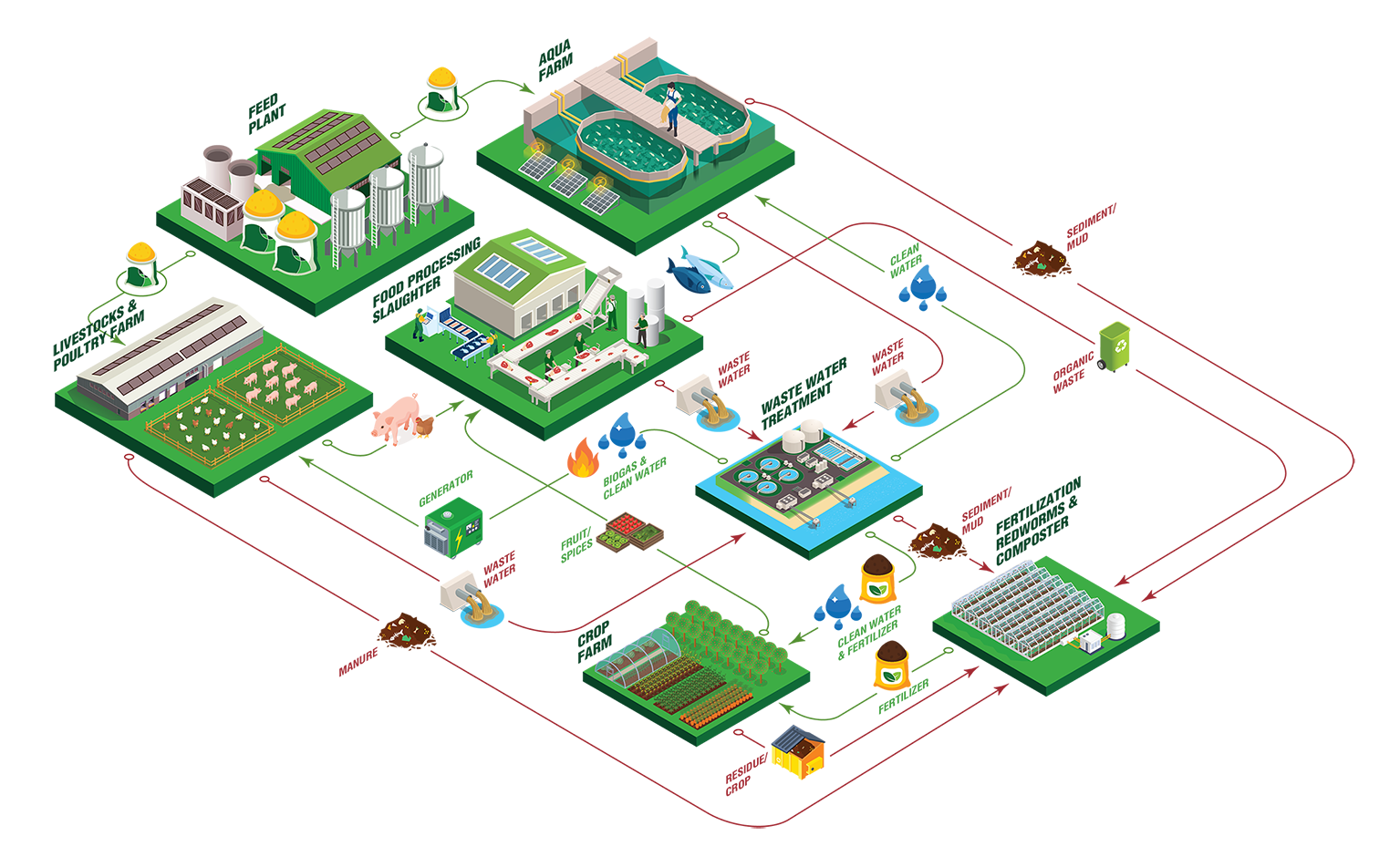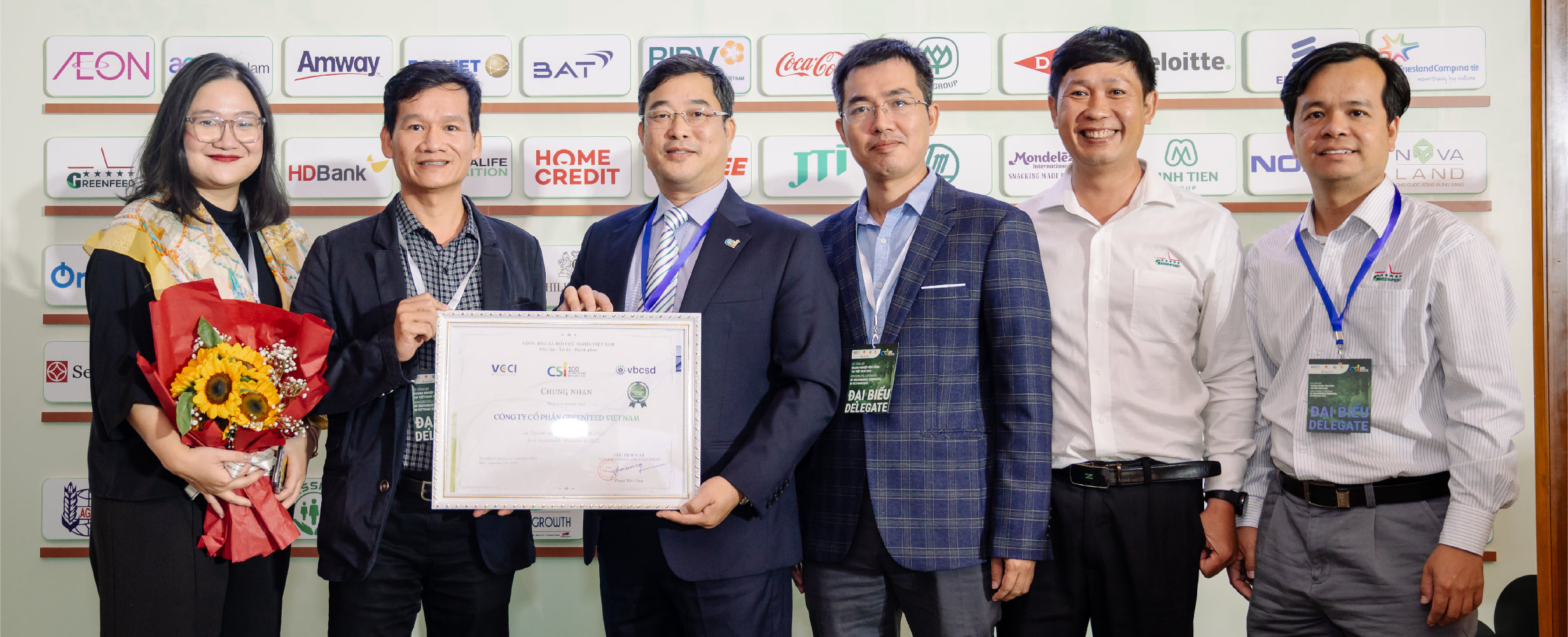
Sustainable
environment
-
RESOURCE AND MATERIAL EFFICIENCY
-
ENERGY EFFICIENCY AND CLIMATE CHANGE
-
REDUCING CARBON EMISSION
-
CIRCULAR ECONOMY PRACTICES
-
ENVIRONMENTAL COMPLIANCE
Circular economy and environmental
management approach
The Group is continuing to promote research and combine resource mobilization to replicate circular economy
solution models, aiming to create value for partners and customers, promote production and sustainable consumption.
solution models, aiming to create value for partners and customers, promote production and sustainable consumption.

THE PRACTICES OF ECOLOGICAL AGRICULTURE FROM ORGANIC FERTILIZERS





Resource and material efficiency


In order to minimize use of non-biodegradable plastic packaging at feed mills, GREENFEED uses silo systems
for feed storage and bulk cargo for large shipments. It helps control product quality and loss in transit
as well as ensure resource efficiency. In 2022, bulk cargo shipping rate was 18.41% (a 15% rise over
2020), and the rate of plastic packaging per ton of product decreased by 17.9% (compared to 2020).
Energy and climate change
At factories and farms, in addition to solutions for equipment maintenance, GREENFEED developed energy-saving
programs to evaluate energy efficiency and
management. Several initiatives have been deployed: using biomass fuel for boilers at feed mills; installing variable frequency drives for motors, and
capacitor systems to reduce electrical losses; utilizing waste heat to save fuel for boilers; and installing rooftop solar power systems
at the Dong Nai feed mill and several certain farms.
management. Several initiatives have been deployed: using biomass fuel for boilers at feed mills; installing variable frequency drives for motors, and
capacitor systems to reduce electrical losses; utilizing waste heat to save fuel for boilers; and installing rooftop solar power systems
at the Dong Nai feed mill and several certain farms.




Reducing carbon emissions, aiming for Net Zero
GREENFEED has been collaborating with strategic partners to comprehensively deploy programs for reducing electricity consumption across its factories. The Group pays close attention to factories with high energy consumption and those located in regions with great solar energy potential.
Several solutions to reduce non-biodegradable plastic packaging, including:
- Using bulk cargo and silo system for feed shipping to reduce use of plastic packaging by 20%
- Increasing the recovery, reuse, and recycling rate of production waste to 90%
- Improving the Feed Conversion Ratio (FCR) to help reduce greenhouse gas emission

Circular economy practices in water
and waste management
Implementing circular economy practices across the 3F Plus chain, GREENFEED converts pig manure waste into
organic fertilizers which are then used to fertilize crops or use for green buffer zones around farms.
This whole process not only helps GREENFEED to manage livestock waste but also generate value-added products. Its three vermicompost product lines are highly appreciated by farmers.
This whole process not only helps GREENFEED to manage livestock waste but also generate value-added products. Its three vermicompost product lines are highly appreciated by farmers.

Promoting environmental
awareness and compliance
- Investing in environmental protection projects as commitments in the Environmental Impact Assessment report
- Monitoring and minimizing waste; coordinating waste transfer according to current legal regulations
- Conducting periodic environmental quality monitoring and assessment at business units
- Communicating policies and environmental management procedures to every employee and stakeholders
- Participating in the propagation of environmental protection policies and laws conducted by government authorities
In addition, GREENFEED has launched internal programs, towards much higher energy efficiency and plastic
reduction, to raise awareness of environmental protection. These programs are not only vigorously and
comprehensively implemented across business units but also attract participation of more than 4,000
employees.


